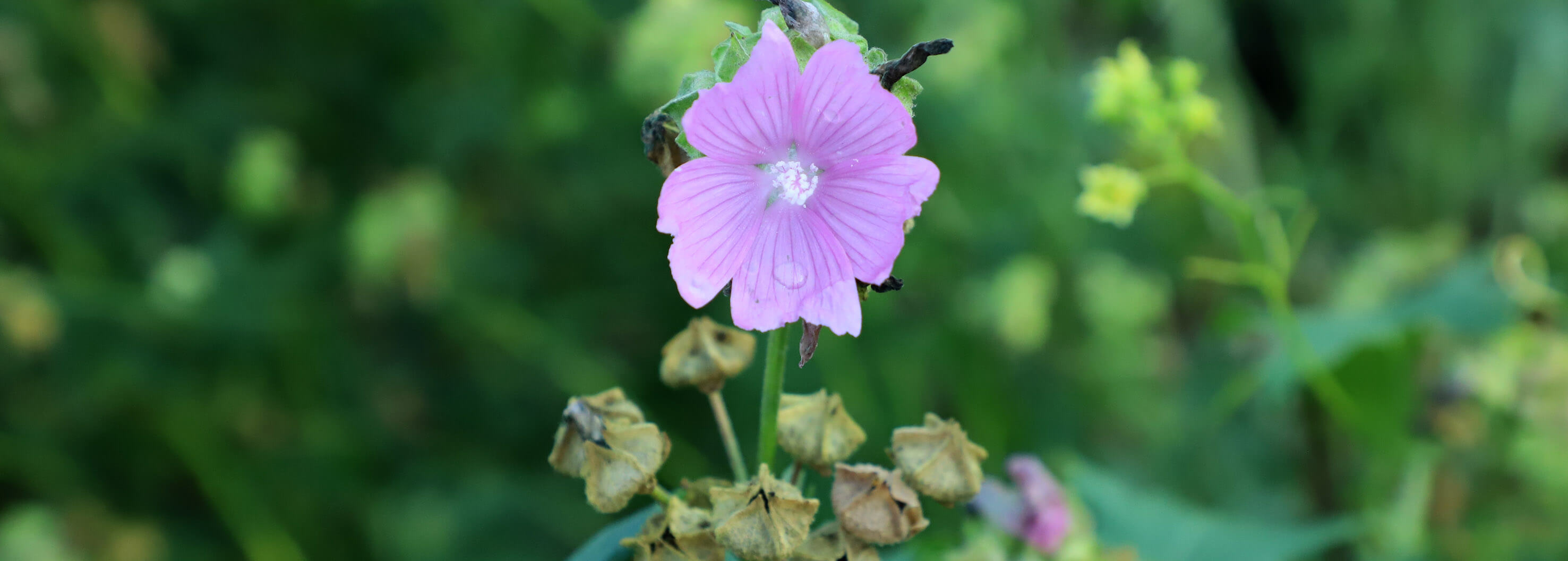
Malva moshata (musk mallow)
Malva moshata is a perennial species native to Europe and southwest Asia. It grows up to 60 cm and is widely cultivated as an ornamental plant because of its showy, scented flowers. The flowers blossom for an extended period during summertime. It is possible to prolong the flowering by cutting the stems when they are finished flowering, the plants will then flower once again. Perennial plants can be quite short-lived, but frequently self-sow in favorable settings. The leaves have a mild flavor and can be used in fresh salads. The seeds are small and edible with a nutty taste. The medical use for musk mallow is similar to that of the more widely used marshmallow and common mallow. Use includes external treatment of bruises, insect bites, internal treatment of diseases of the respiratory system and inflammation of the urinary- and digestive systems. Leaves and flowers are the most used parts and can be eaten as they are or used for tea.
Cultivation
Sow the seeds in early April in a broadcast tray. In best case scenario, some mature seeds can be harvested the first year. Sowing in late spring will result in seed production the second year. The outcome is dependent on geography and weather. Use tray substrate and put under light conditions, approximately 20-23 °C. Cover seeds to a depth of 0.5-1 cm.
Transplant the plants into small individual pots in pot substrate when large enough to handle. The pots can be placed in an unheated greenhouse, or outside when no risk of frost.
Family: Malvaceae
Swedish: myskmalva
Finnish: myskimalva
Norwegian: moskuskattos
Danish: moskuskatost
Icelandic: moskusstokkrós

All Malva-species are prone to rust, weakening the plants and in severe cases damaging the seeds.
Plant outside in field when fully rooted. Musk mallow prefers semi-shade or sunny settings. All Malva-species are prone to rust, weakening the plants and in severe cases damaging the seeds. Make sure to use suitable crop rotation to moderate the disease. Flowering time for Malva moshata is June to September and seed harvest will normally take place between July and September, either the first or second year. Due to the extended flowering period, seeds can mature gradually and unevenly. The seeds forms a round “cheese” and when mature they can easily be separated from each other. Harvest when seeds are brownish and dry and always under dry conditions.
